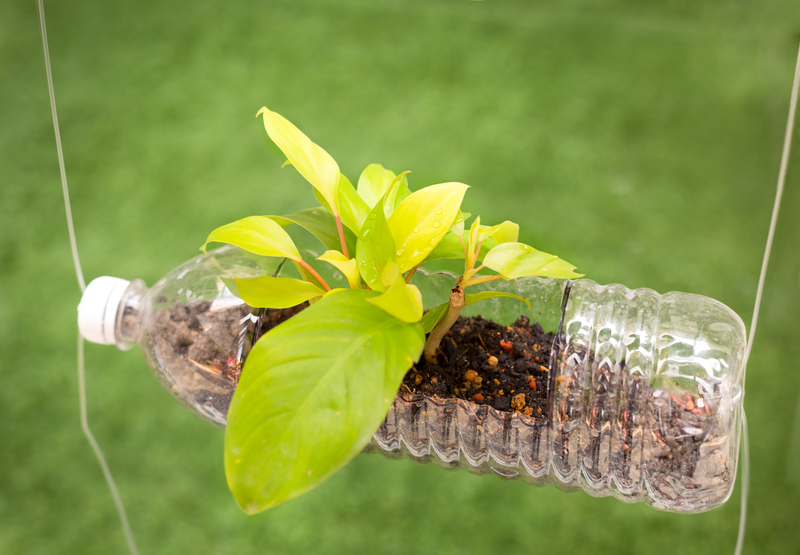Community Guidelines for PPE Disposal During and After Pandemics
The COVID-19 pandemic revolutionized the way people and communities approach personal protection and hygiene. As we navigate through and beyond pandemics, the increased usage of personal protective equipment (PPE) like masks, gloves, face shields, and gowns presents a unique challenge: how to dispose of PPE safely and responsibly. Following proper community guidelines for PPE disposal during and after pandemics helps protect public health and the environment.

Why Proper PPE Disposal is Crucial
PPE, while essential for infection control, is often produced from non-biodegradable materials, such as polypropylene. If not disposed of properly, these items can harm wildlife, pollute water bodies and soil, and become vectors for disease transmission. Ensuring safe and sustainable disposal practices is vital not only during health crises but also afterward, as communities rebuild resilience for future pandemics.
Key Reasons for Following PPE Waste Management Guidelines
- Mitigates the spread of infectious diseases: PPE can harbor viruses and bacteria long after use.
- Protects waste management workers: Safe disposal minimizes exposure risk for these frontline workers.
- Reduces environmental pollution: Prevents plastics and toxic contaminants from entering natural habitats.
- Promotes community responsibility: Encourages sustainable habits and collective well-being.
Types of PPE and Their Environmental Impact
Understanding various forms of PPE and their environmental footprint allows communities to make informed decisions:
- Disposable Masks: Usually made from non-woven plastics; can persist in the environment for decades.
- Gloves: Latex and nitrile gloves are not biodegradable and can entangle wildlife if not properly disposed of.
- Face Shields: Constructed with plastic and foam; challenging to recycle without special facilities.
- Protective Gowns: Often made from synthetic fibers that resist decomposition.
Improperly discarded PPE such as masks and gloves have already been observed littering city streets, waterways, and even beaches worldwide. This growing environmental issue accentuates the need for clear and effective community PPE waste disposal guidelines.
Comprehensive Community Guidelines for PPE Disposal During Pandemics
During pandemic waves, communities must adopt stringent PPE disposal measures to minimize infection risks and environmental impact. Here are key recommendations for PPE waste management during pandemics:
1. Use Clearly Marked PPE Disposal Bins
- Place dedicated bins for PPE in public areas, hospitals, businesses, and transportation hubs.
- Bins should be lined with sturdy, leak-proof bags and marked with clear signage indicating "For PPE Waste Only."
- Strategically situate bins in high-traffic and high-risk locations to encourage usage.
2. Seal and Store Used PPE Properly
- Used masks, gloves, and similar items should be folded inwards to minimize contamination risks, then placed in designated bins.
- Bin liners should be securely tied before removal.
- Storage areas need to be well-ventilated, away from public access, and shielded from wildlife.
3. Regular Collection and Safe Transportation
- PPE waste bins must be emptied daily at minimum, more frequently in high-use areas.
- Transport PPE waste in dedicated, covered vehicles to authorized disposal facilities.
- Waste handlers should always wear adequate PPE themselves, and follow strict hand hygiene protocols after handling waste.
4. Community Education and Awareness Campaigns
- Use local media, social platforms, and community meetings to explain the importance of proper PPE waste disposal.
- Distribute informative posters and digital content on the correct steps for safe disposal.
- Engage schools and neighborhood groups in PPE disposal awareness events.
5. Discourage Littering and Illegal Dumping
- Enforce penalties or fines for improper PPE disposal where feasible.
- Install CCTV or monitoring systems in busy locations to deter littering.
- Reward positive disposal practices with community recognition or incentives.
Guidelines for PPE Waste Disposal After Pandemics
As case numbers decline and public health emergencies are lifted, communities must sustain best practices for PPE waste disposal even after the official end of a pandemic. Here's how:
1. Gradual Phase-out of Extra PPE Bins
- Monitor PPE waste volumes before removing additional bins from public areas.
- Assess ongoing community habits and adjust bin placement accordingly to prevent resurgence of littering.
2. Encourage Reusable PPE Where Possible
- Advocate for reusable masks, cloth covers, or washable face shields that meet safety standards.
- Provide clear cleaning and maintenance instructions to reduce health risks.
- Reusable options, when handled correctly, can significantly cut PPE waste streams post-pandemic.
3. Reinforce Public Education
- Continue communicating the importance of PPE waste management through community updates.
- Use lessons learned from the pandemic to refine future PPE disposal protocols.
- Empower residents to report inappropriate disposal or localized pollution incidents.
4. Partner with Waste Management Authorities
- Collaborate with municipal and private waste haulers to ensure collection of any lingering PPE waste.
- Explore recycling or energy recovery options for PPE, if available and safe.
- Invest in research to develop biodegradable PPE and innovative disposal technologies.
Best Practices for Households
Individual households play a vital role in ensuring the effectiveness of community PPE disposal protocols during and after pandemics. Here are essential household tips:
- Do NOT place used PPE with recyclables: PPE is typically not recyclable with standard materials due to contamination risks.
- Bag used PPE separately: Place used masks, gloves, and wipes in a dedicated bag, tie it securely, and dispose of it with landfill-bound waste.
- Wash hands thoroughly: Immediately wash hands with soap and water after handling used PPE, even if gloves were worn.
- Do not burn PPE waste: Burning PPE can release toxic fumes and should only occur in professionally controlled incinerators.
- Educate all family members: Teach children and seniors not to touch or pick up stray masks or gloves on the ground.
Addressing PPE Litter in Public Spaces
The sudden visibility of PPE litter in urban and natural environments has alarmed environmentalists and local authorities. Communities must act collectively to reduce the environmental impact of PPE waste. Here are actionable measures:
- Community clean-up drives: Unsafe PPE should be collected by trained personnel using grabbers and proper PPE themselves.
- Promote responsible behavior: Display signs and reminders in parks, transport stops, and busy areas.
- Encourage 'carry out what you bring in' policies: For outdoor areas, advise residents to take their used PPE home for safe disposal.
The Role of Local Governments and Health Departments
Effective PPE disposal management during and after pandemics is a shared responsibility, but local governments and health agencies are central to its success.
- Draft and enforce local PPE disposal regulations. Set standards for businesses, public locations, and households.
- Coordinate waste collection services: Ensure the timely retrieval and safe processing of PPE waste from both public and private sources.
- Support public outreach: Fund and implement campaigns that demystify PPE waste handling and highlight health risks.
- Monitor compliance: Use surveys, feedback mechanisms, and routine inspections to identify gaps and improve protocols.
Global Initiatives & Innovations in PPE Waste Management
Since the advent of the COVID-19 pandemic, countries around the world have innovated on PPE disposal guidelines. Examples include:
- Recycle-Cycle Programs: Select regions in Europe and Asia partner with recycling firms to process limited quantities of uncontaminated PPE into usable materials.
- Infectious Waste Incineration: Some nations use high-temperature incinerators equipped with emission controls to safely destroy contaminated PPE, reducing the risk of land and water pollution.
- Biodegradable PPE Development: Ongoing scientific research aims to create compostable masks and gloves, which could transform future PPE waste management.
Common Mistakes in PPE Disposal & How to Avoid Them
Avoid these frequent errors to ensure safe and eco-friendly PPE waste disposal:
- Flushing PPE down toilets: Never flush masks, gloves, or sanitizing wipes. They clog sewer systems and pollute water bodies.
- Mixing PPE with recyclables: Cross-contamination jeopardizes entire loads of recyclable materials.
- Leaving PPE on sidewalks or roads: Not only unsightly, it also increases public health risks.
- Reusing single-use PPE: Disposable PPE loses effectiveness after one use and can become a vector for infection if reused.

Building a Culture of Safe PPE Disposal
The impact of pandemics like COVID-19 underscores the need to embed PPE disposal guidelines into the fabric of community health practices. This requires more than rules; it calls for a culture of environmental stewardship and public responsibility.
- Model good behavior: Community leaders, influencers, and public officials should consistently demonstrate proper disposal techniques.
- Empower youth and schools: Involve children, students, and educators in PPE waste reduction projects.
- Celebrate achievements: Highlight success stories and recognize efforts by local individuals or groups.
Conclusion: A Shared Responsibility for PPE Waste
Whether during a health crisis or when returning to normalcy, proper PPE disposal is a collective obligation. Improper waste management not only endangers public health but also threatens the ecological balance of our communities. By adhering to comprehensive and effective guidelines for PPE disposal during and after pandemics, citizens, businesses, and governments can safeguard their environments and ensure preparedness for future health emergencies.
Let us all play our part in keeping our communities safe, healthy, and clean--one mask and glove at a time.
